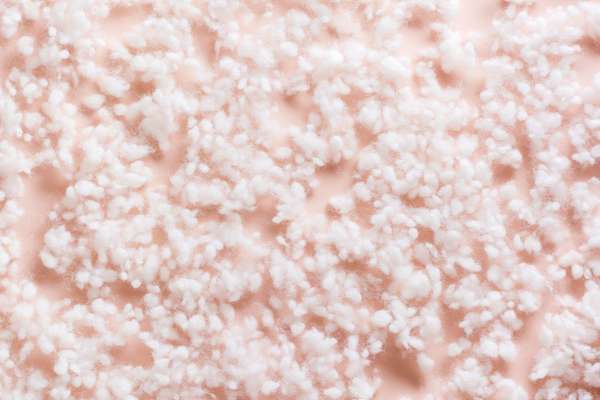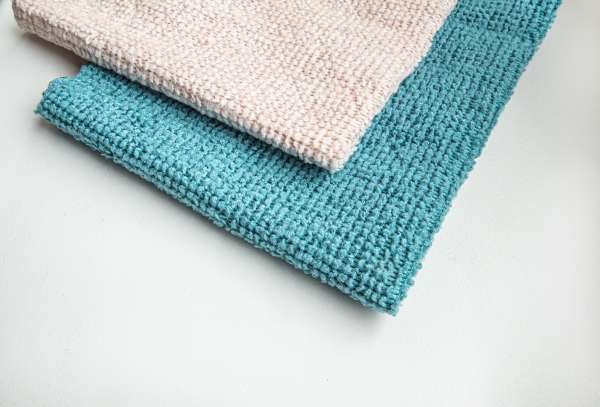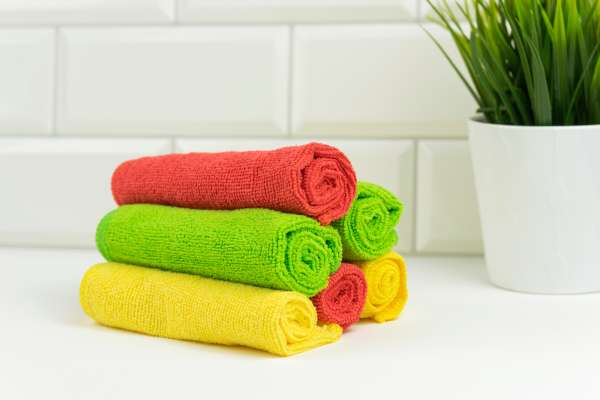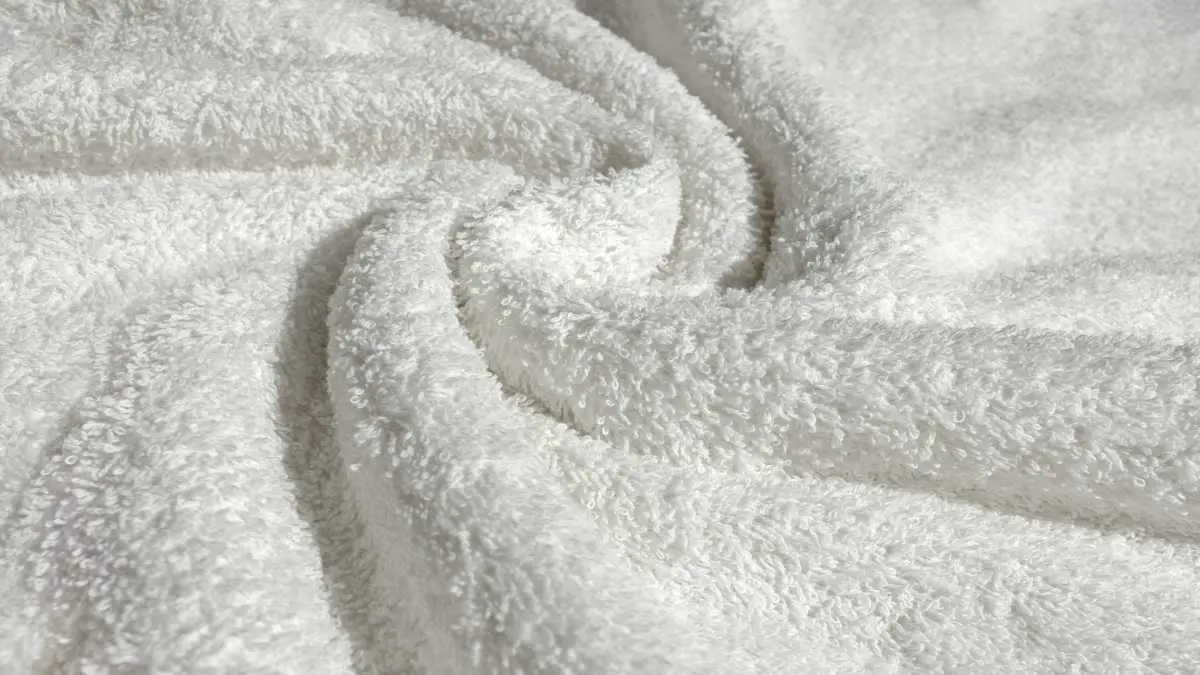When it comes to purchasing a comforter for the bed, there are many types of materials from which you can choose. One of those materials is microfiber, which has become increasingly popular due to its space-saving capability paired with good thermal insulation qualities. When Choosing Microfiber vs Polyester Comforter which is better ? At one point, the use of a polyester comforter used to be quite commonplace among home owners because it is inexpensive and durable. Fabrics like microfiber are now more widely used as an alternative to other types of material.
What is a Microfiber Comforter and what are the benefits over a Polyester Comforter

A microfiber comforter is made of extremely fine fibers that give it a soft, plush feel. These fibers also make it more durable and less prone to tearing or snagging, extending the lifespan of the comforter. In addition, microfiber is known for its ability to insulate well and regulate temperature, making it a great option for those who tend to get hot or cold easily while sleeping.
Compared to polyester comforters, microfiber provides superior warmth without the added weight often found in other materials. It is also hypoallergenic and resistant to odors and dust mites, making it a practical choice for allergy sufferers.
Ultimately, microfiber comforters offer a combination of comfort, durability, and functionality that make them a worthwhile investment for any bedroom.
How does the Manufacturing process of Microfiber Differ from Polyester
When it comes to the manufacturing process, microfiber and polyester differ in a few key ways. Microfiber is made from ultra-fine synthetic fibers, often involving a combination of nylon and polyester.
These fibers are woven together tightly to create a strong, durable material. In contrast, polyester is made from single strands of synthetic polymer that are loosely woven or knitted into fabric. Another difference lies in the finishing process. Microfiber often undergoes an additional finishing treatment, such as coating or calendaring, to enhance its performance qualities and give it a softer feel.
Polyester, on the other hand, may not undergo any further finishing processes before being sold as fabric.
Overall, the manufacturing process for microfiber involves more steps and materials than that of polyester. However, these extra steps result in a higher quality material with distinct performance benefits.
Which one is better for people with Allergies- Microfiber or Polyester

When it comes to allergies, both polyester and microfiber have pros and cons. Polyester tends to be less expensive and more durable, but can trap more allergens like dust and pet dander. Microfiber, on the other hand, is known for being more absorbent and better at trapping particles.
However, microfiber may also release microscopic fibers that can worsen respiratory issues for some allergy sufferers. Ultimately, the best option for allergy sufferers will depend on their individual sensitivities and preferences.
For those who prioritize allergen control, microfiber might be a better option; however, those with sensitivities to microfiber may want to opt for polyester or another hypoallergenic material. Consulting with a doctor or allergist can help individuals make the best choice for their specific needs.
How do you wash a Microfiber Comforter and how often should it be done
When it comes to washing a microfiber comforter, it’s important to follow the care instructions provided by the manufacturer. In general, most microfiber comforters can be machine washed on a gentle cycle in warm water using mild detergent. It’s best to avoid using fabric softener or bleach, as these can damage the microfiber material.
As for frequency of washing, it really depends on personal preference and how often the comforter is used. However, experts recommend washing your bedding every 1-2 months to remove allergens and maintain hygiene. Taking proper care of your microfiber comforter will ensure its longevity and comfort for years to come.
What are some common complaints about using a Microfiber Comforter
One of the most common complaints about microfiber comforters is their lack of breathability. Many users report feeling uncomfortably warm and sweaty during the night, leading to disruption of sleep. In addition, some people experience allergic reactions to the synthetic fibers used in microfiber comforters.
These allergies can manifest as skin irritation or respiratory symptoms. Another concern with microfiber comforters is that they can be difficult to clean properly. The tightly woven fibers tend to trap dirt and debris, which can lead to odors if not washed frequently enough.
Though they may initially appear more affordable, microfiber comforters have a shorter lifespan and may need to be replaced more often than their natural fiber counterparts. Ultimately, it’s important to weigh the pros and cons before deciding on a microfiber comforter for your bedding needs.
Is there anything else I should know before making my purchase microfiber comforters ?
All in all, microfiber comforters are a great choice for anyone looking for an allergy-friendly bedding option. Not only are they easy to keep clean, but they also provide plenty of warmth and comfort.
If you’re considering making the switch to a microfiber comforter, be sure to read up on the proper care instructions so you can enjoy your new bedding for years to come. Have any other questions about microfiber comforters ? Leave them in the comments below and we’ll do our best to answer them.
The Pros and Cons of Microfiber and Polyester Comforters
When it comes to comforters, there are two main types of fabrics that you can choose from: microfiber and polyester. Both have their own set of pros and cons, so it’s important to know the difference before you make a purchase. In this blog post, we’ll break down the key differences between microfiber and polyester comforters so that you can make an informed decision.
Microfiber Comforters
Microfiber comforters are made from extremely fine synthetic fibers. They are lightweight, hypoallergenic, and resistant to dust mites, making them a great option for people with allergies. Microfiber comforters are also less likely to pill than other types of comforters. On the downside, microfiber comforters can be less durable than polyester comforters and they may not be as warm.
Polyester Comforters
Polyester comforters are made from thicker synthetic fibers than microfiber comforters. They are typically more durable and warmer than microfiber comforters, making them a good choice for people who live in cold climates. However, polyester comforters can be more likely to pill than microfiber comforters and they may not be as hypoallergenic.
So, which type of comforter is right for you ? That depends on your specific needs and preferences. If you’re looking for a lightweight, hypoallergenic option that won’t pill, then a microfiber comforter is a good choice. If you need a durable, warm comforter for a cold climate, then a polyester comforter is a better option. No matter which type of comforter you choose, we hope you’ll be happy with your purchase!
Microfiber vs Polyester which is better ?

When it comes to fabrics, there are a lot of options to choose from. Two popular materials are microfiber and polyester, but which one is better? While both materials have their own advantages, such as being durable and wrinkle-resistant, microfiber has some unique features that make it the clear winner.
One standout quality is its absorbency: microfiber can hold up to seven times its weight in water, making it perfect for towels and washcloths. It also has antimicrobial properties and is thinner than polyester, making it a more comfortable option for clothing. Overall, microfiber offers the best combination of practicality and comfort. So next time you’re shopping for fabrics, consider giving microfiber a try.
Microfiber vs Polyester which is better for bedsheets ?
When shopping for bedsheets, you may see options labeled as microfiber or polyester. But which is better for a restful night’s sleep? Microfiber sheets are made of extremely fine synthetic fibers, often considered to be softer and more durable than polyester.
They also have a higher thread count, resulting in a smoother, more luxurious feel. However, they tend to retain heat more easily and can be prone to static cling. In contrast, polyester sheets are less soft but more breathable and easier to clean.
Ultimately, the best option for you will depend on your personal preferences and sleeping habits – do you want a smooth silky feel or a cool and crisp one? Experiment with both types before making your final decision.
